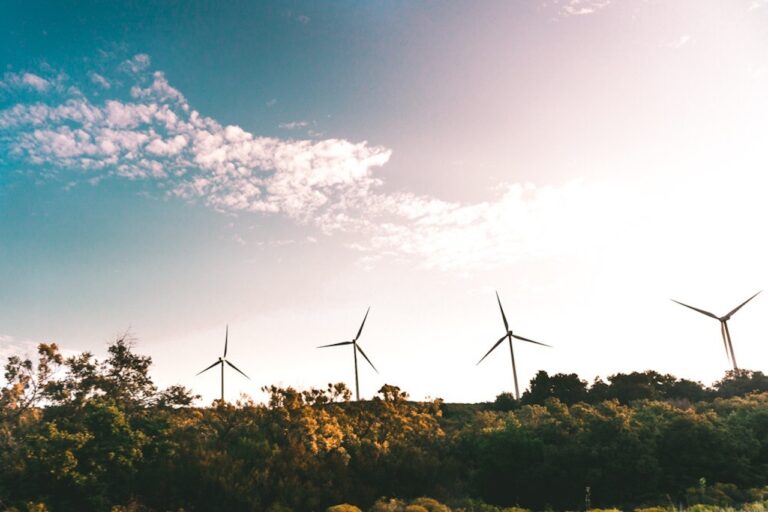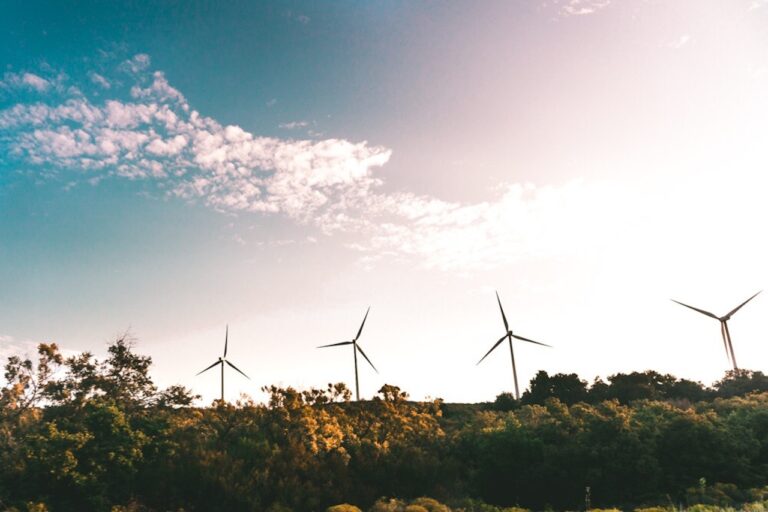Introduction
How Waves Could Power A Clean Energy Future! We are continuously looking for new and inventive ways to produce electricity without affecting the environment as the globe transitions to renewable energy. This has been successfully accomplished with solar and wind power, but what about wave power? Waves have the potential to provide a significant amount of clean energy for the future. With more research and development, wave power could become a viable complement to solar and wind power. Can we harness the strength of the waves to produce sustainable energy in the future? We examine wave power’s possibilities for a clean energy future in this blog post.

What is wave power?
Wave power is a type of renewable energy that produces electricity using the kinetic energy of ocean waves. Wave energy converters (WECs), specialized equipment, are used to transform the upward and downward motion of waves into electrical energy. These gadgets are available in a variety of sizes and designs, but they all function by transforming the energy of ocean waves into electricity.

Benefits of wave power for a clean energy future
Wave power has a number of advantages for the future of renewable energy:
- Unlike fossil fuels, which can only be used temporarily, wave power is a renewable energy source that may be used continuously.
- Low environmental impact: Wave power is a cleaner option to fossil fuels because it doesn’t emit greenhouse gases or pollute the air.
- Wave power produces a predictable result: Unlike wind and solar electricity, which might fluctuate depending on the weather, waves are more consistent.
- Wave power can be utilized to supplement other renewable energy sources like solar and wind to create a more dependable and steady energy supply.
Challenges of wave power for a clean energy future
Although wave power has many advantages, there are still a number of obstacles to be overcome before it can be widely used as a source of renewable energy:
- There are just a handful of commercial-scale wave power projects in operation, and the technology is still in the experimental stage.
- Wave power equipment can be pricey: Wave power may be more expensive than other renewable energy sources due to the high cost of building and maintaining wave energy converters.
- Storms and strong seas may have an impact on wave power: Wave power equipment may be damaged by storms and rough seas, which may have an impact on their effectiveness and necessitate costly repairs.
- Wave power can have an impact on marine life: Wave power devices can disrupt the movement and behavior of marine life, which can have a negative impact on ecosystems.

Despite these difficulties, wave power has significant potential for a clean energy future. Wave power has the potential to be an important player in the world’s transition to renewable energy because it can provide a sizable amount of electricity while lowering greenhouse gas emissions.
Wave power projects around the world

While wave power is still in its early stages, there are several projects around the world that are exploring the potential of this renewable energy source. Here are a few examples:
- The Pelamis Wave Energy Converter is a machine created by the Scottish business Pelamis Wave Power. It is made up of several tubes that are joined together and move up and down in tandem with the velocity of the waves. The tubes’ motion is utilised to power hydraulic pumps that produce electricity. Off the Portuguese coast, the Pelamis device has undergone a successful test, and projects on a commercial scale are currently being planned.
- Using the CETO Wave Energy System The CETO system, created by Australian business Carnegie Wave Energy, employs submerged buoys to harness the power of waves. As the buoys rise and fall with the waves, a pump system connected to them produces electricity. The CETO system has undergone testing off the coast of Western Australia and may be able to supply distant island populations with sustainable energy.
- The WaveRoller is a device created by the Finnish business AW-Energy. It is made up of a panel that moves back and forth in sync with the velocity of waves. A hydraulic system uses the movement of the panel to generate electricity. The WaveRoller has undergone successful testing off the Portuguese coast and might offer coastal communities sustainable energy.
- The Azura Wave Energy Converter is a device that was created by the American company Oscilla Power to convert the energy of ocean waves into electricity. The system consists of a platform that floats and is joined to a number of arms that swing back and forth in response to the movement of the waves. A hydraulic system uses the movement of the arms to create electricity. Off the coast of Hawaii, the Azura gadget has undergone successful testing and has the potential to bring renewable energy to isolated villages.
The future of wave power for a clean energy future

Future sustainable energy sources could include a considerable amount of wave power. Even though the technology is still in its infancy, wave power has already been used successfully in a number of projects around the world.
More study and development are required to overcome the barriers to wave power’s viability as a renewable energy source. This entails addressing the effects of wave power on marine life as well as creating wave energy converters that are more cost-effective and efficient.
Governments and investors can help wave power gain acceptance as a reliable source of renewable energy. This include supplying financial support for research and development, providing incentives for the use of wave power equipment, and enacting laws that promote the use of wave power.
Conclusion
Future sustainable energy sources could include a considerable amount of wave power. The advantages of wave power as a renewable energy source are substantial, despite the fact that there are still a number of obstacles to be solved. Wave power has the potential to be a competitive alternative to solar and wind energy in the transition to a clean energy future with additional study and development.
Governments and investors can speed up the adoption of this renewable energy source and lessen our reliance on fossil fuels by making investments in wave power technologies. Wave power is a significant component of the answer to the global climate catastrophe since it has the ability to supply clean energy for future generations.







